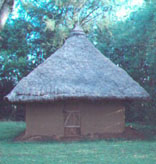01/10/2007


GRANTS
ARCHIVES
;
LUOCOME
KISUMU.
9th January 2007
LAKE VICTORIA IS LEADING OTHER LAKES IN FISH PRODUCTIONS
By Leo Odera Omolo
Lake Victoria, the world's second largest fresh water lake is the most productive fresh water fishery in Africa, a report has revealed.
A report and survey carried out by the Kisumu based Lake Victoria Fisheries Organization has revealed that the Lake produces a fish catch of more than 800,000 tonnes annually, fetching about USD 590 million (Kshs. 4.1 billion).
Out of this USD 340 million is generated at the shores while a further USD 250 million is earned through export of the popular and lucrative Nile perch.
The report, however, did not specify whether this figure represented the annual earning from fish trade in all the three countries of Kenya, Tanzania and Uganda, which share the lake waters or this figure reflected the fish trade in Kenya alone.
The survey indicated that the fishing population was on the increase between the year 2000 and 2006. For instance, states the survey, the estimated annual handling in 2001 was about 620,000 tonnes of which Nile perch was 42 per cent, dagaa (omena) 40 per cent, tilapia 17 per cent and other species one per cent.
The total catch in 2005 rose to 804,000 tonnes of which Nile perch had 29 per cent, dagaa 48 per cent, haplocromines 13 per cent, Tilapia 9 per cent and other species 10 cent.
In 2006, the catch was 1,061,107.6 tonnes of which Nile perch was 24 per cent, dagaa 54 per cent, tilapia 7 per cent, haplocromines 13 per cent and other species less than one per cent.
The number of fishing crafts increased by 63 per cent from 42,493 to 69,160, during the year under review.
The number of fishing boats using outboard engines also increased from 4,108 to 12,000, a 211 per cent increase. The report shows that the mean stock for the lake was estimated at 727 tonnes during Lake Victoria Hydro-accoustic survey (1999 to 2001) but declined to 212 tonnes in 2005-2006 survey.
Over the same period, the number of gillnets increased by 88 per cent from 650,653 in 2000 to 1,222,307 in 2006 and logline book by 9,044,550.
Tilapia was introduced in the Lake in 1950 to boost production while Nile perch was to feed on the haplocromines. But the species which were of much economic value were devoured by the Nile perch. Nearly all the indigenous fish species, which numbered about 50 or so have since mysteriously disappeared and become extinct. The report, however warns that continued fishing at current levels will lead to decline in catches and biomass.
The fillets from Nile perch are very popular in hotels in the Middle East, Europe, Japan and the United States.
Fishing support about 2 million people and also meets the consumption of 22 million people in the region every year.
The recent arrival of floating islands and water hyacinth has meanwhile blocked the narrow trip of Kavirondo Gulf, hampering both fishing activities and navigation of fishing and ships from the main Kisumu pier.
ENDS
leooderaomolo@yahoo.com
The writer is LUOCOME REPORTER based in Kisumu. We urge all LUOCOME members with pressing issues pertaining to media and press releases to kindly contact him from any where in world. He will assist you to get true picture of your Village Developement.
LUOCOME-MEDIA
Joluo.com
Ka in gi mari moro ma di wandik ka to orni
Akelo nyar Kager,
jaluo@jaluo.com
Daher winjo dwondi in bende, iwinjo?
IDWARO TICH?
INJILI GOSPEL
GALAMORO : Riwruok mar JOLUO e Piny Ngima, orwaku uduto mondo ubed e kanyakla mar burani. Ornwa nyingi gi nondi kaka obedo. Riwruok e teko joka Nyanam.